#Lou Harrison
Text

Photo by Dezo Hoffmann.
George’s first American visit, part 2 —
“When the trio [George, his brother Peter, and sister Lou] arrived, they were informed that Marcia [Raubach] had already gone home for the day. At the station were Art Smith, an advertising salesman, and Joe Browning, the weekend announcer. Smith remembers George Harrison as being ‘a very nice fellow,’ and Browning agreed. But Browning added, ‘I thought he needed to get a haircut.’
[…] When [Marcia] arrived [back] at the station, [she] recalls, [George] was very excited about the car she was driving. It was her father’s black 1959 Oldsmobile Delta 88 with tail fins. ‘He really looked it over; he asked me if it was my car,’ she said. ‘I told him no, but he was really impressed with it. He was impressed with a lot of things.’ Marcia recalls [George] as being ‘very, very clean cut,’ wearing a white shirt, jeans and brown sandals. […]
Raubach said she found the young British musician to be ‘really soft-spoken and almost hesitant to ask me questions.’” - Before He Was Fab: George Harrison’s First American Visit (2000)
“George told Marcia that he was an apprentice electrician, but that the Beatles were really taking off back home. ‘He really liked my dad’s Oldsmobile Delta 88,’ Marcia recalls. On her radio show that day she played ‘From Me To You’ and ‘She Loves You,’ but it’s her recollection that the songs made little impression on her listening audience. George gave her a copy of ‘She Loves You,’ which she keeps in a safe deposit box at the bank. ‘I wish I’d have asked him to autograph it,’ she says.
Marilyn Lewis, who also interviewed George, for the Echo, the Benton Community High School newspaper, says she did it ‘mainly as a favor to Louise.’ […] George told her that so many fans mobbed his band at one appearance that they had to be smuggled into the venue in a garbage truck, but Marilyn wasn’t overly impressed. Was he cute? ‘Heavens, no,’ the now-retired Ohio teacher says. ‘He looked kind of pitiful.’” - Smithsonian Magazine
Please note: You can find photos taken during this vacation featured in Living In The Material World. (x)
#George Harrison#Peter Harrison#Lou Harrison#Marcia Raubach#Marilyn Lewis#ghamericanvisit60#quote#quotes about George#George and fame#The Beatles#1963#fits queue like a glove
129 notes
·
View notes
Text

The magazine this article came from is unknown, but it was written in Feb. 1964 by Nora Ephron.
Transcript:
The Youngest Beatle
"The other day at a Beatles press conference for fan magazines, a young lady raised her hand and said, 'Mr. Starr is known for his rings, Mr. McCartney obviously for his looks, and Mr. Lennon for his wife, and then there's Mr. Harrison. What about you, Mr. Harrison?'
George Harrison looked up from his chicken sandwich, batted what have come to be known as his 'adorable eyelashes,' and said, 'As long as I get an equal share of the money, I'm willing to stay anonymous.'
Beatle George has little to worry about. If he didn't have those adorable eyelashes, and a long unbroken unibrow curving across his upper face, it would be almost impossible to distinguish him from the other three mopheads. Beatle fans have no difficulty however; a random sampling of them at the Ed Sullivan Show the other night indicated that more Beatle fans were madly in love with George than with any other Beatle. 'He's just, well, he's, well, I can't explain it,' said one young admirer of George.
Those who know the group find it easy to describe the young man. 'George likes people to be very blunt,' says disc jockey Murray the K. 'He likes them to tell it like it is. No shilly-shallying. He's very definite.'
Harrison's sister, Mrs. Louise Caldwell, agreed. 'He's very direct,' she said. 'He's very much like our mother. Be it bad for her or good for her, she's always direct.
George's bluntness is refreshingly implicit in the few things he says in public. At one press conference, the group was asked why their records had succeeded in the past few months in the U.S., when they had flopped so miserably a year earlier. 'The thing is,' George said, 'Capitol promoted the record.'
At 20, George is the youngest Beatle, and the youngest of four children. His father works for the transport company in Liverpool; his brothers are now tradesmen.
He attended a private school -- 'the best in Liverpool' -- the Liverpool Institute, where his record was spotty. 'George had a "devil-may-care" attitude towards school,' said one friend. 'He was bright, so he didn't apply himself.'
When he was 14, his mother gave him a $5 guitar for Christmas and that more or less finished any thought he might have had to become a scholar. He and Paul McCartney, who also attended the Institute, spent their free time improvising on the guitar and singing together. Occasionally, they would set off on long camping trips, hitchhiking over the countryside with knapsacks on their backs and guitars on their arms.
Midway through school, George dropped out to become an apprentice electrician. 'I had to stop trying to be an electrician because I kept blowing everything up.' he said once. In fact, he had to stop being an electrician when he became deeply involved with being a Beatle. He and Paul had met John Lennon, who attended school nearby, at a local coffee shop. The three began to play guitars together, and The Beatles began.
Why have The Beatles succeeded? 'We're different,' says George, 'and we came along when everyone was ready for a change.'
'In this business, I think you've got to broaden yourself, adapt yourself,' Harrison told the London Evening Standard's Maureen Cleave. 'If you're surrounded by a band of screaming girls, you adapt yourself to that. You don't think they're all lusting after you.'
'If we fizzle out -- well, we fizzle out. But it will all have been a lot of fun.'"
#george harrison#john lennon#paul mccartney#the beatles#nora ephron#louise harrison#lou harrison#maureen cleave#i'm delighted this was written by nora ephron#scans#paul and george#1964
118 notes
·
View notes
Photo
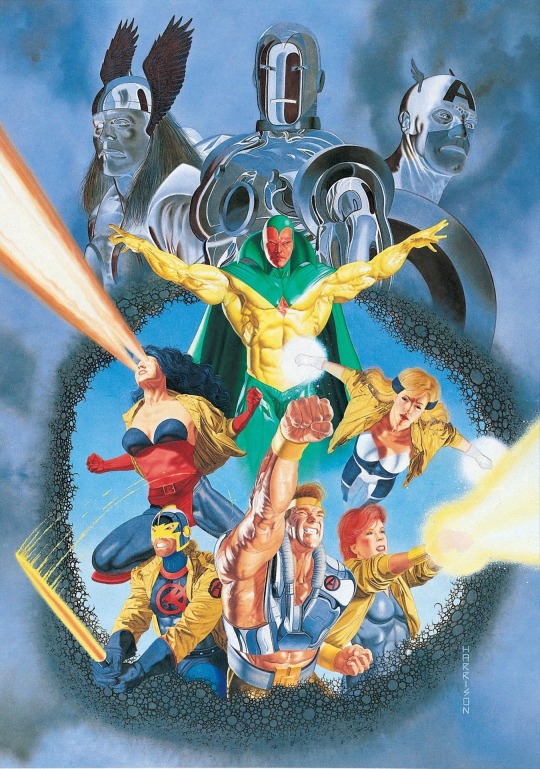
Avengers The Gathering (1990s) by Lou Harrison
120 notes
·
View notes
Text
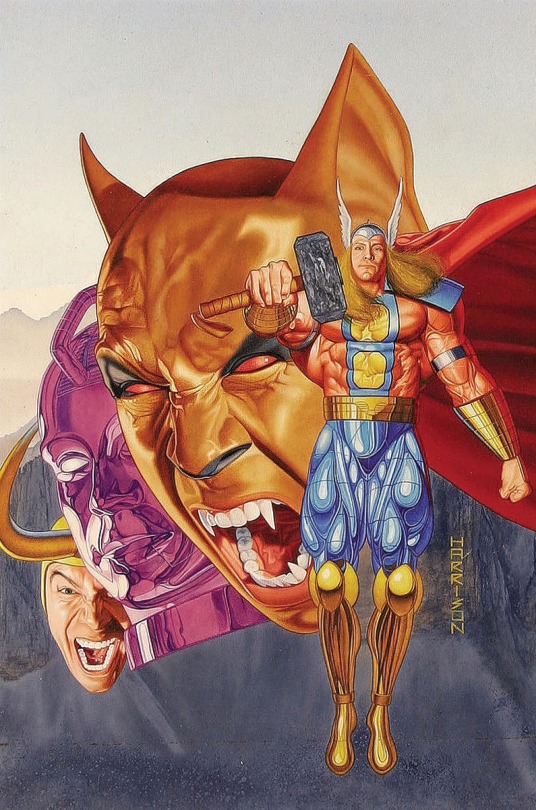
7 notes
·
View notes
Text

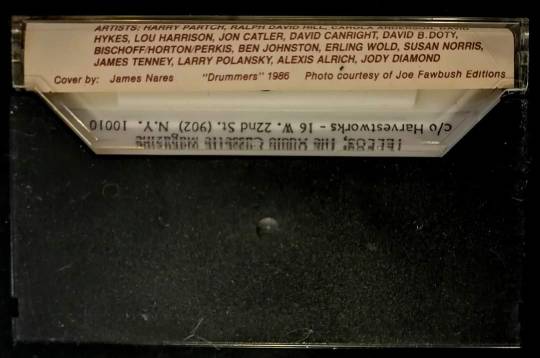
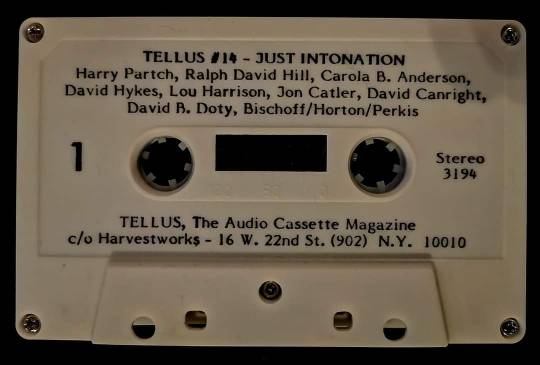
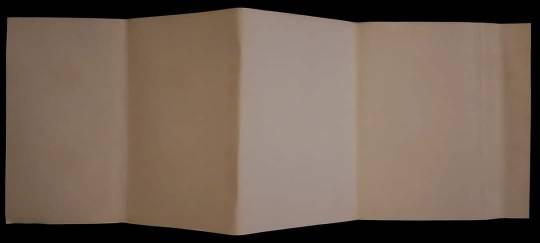

V/A
"Tellus #14 : Just Intonation"
(cassette. Tellus. 1986) [US]
youtube
#compilation#1986#cassette#usa#experimental#contemporary#avant garde#harry partch#David Hykes#Lou Harrison#Jon Catler#John Bischoff#League Of Automatic Music Composers#Ben Johnston#Erling Wold#James Tenney#Larry Polansky#Alexis Alrich#Youtube
4 notes
·
View notes
Text

Original Art - Namor The Sub-Mariner Annual #04 Cover (1991) by Lou Harrison
#Comics#Marvel Comics#Namor#Namor The Sub-Mariner#Namor The Sub-Mariner Annual#Sub-Mariner#Art#Original Art#Vintage#Marvel#1991#1990s#90s#Lou Harrison
84 notes
·
View notes
Photo

Thunderstrike and Sif by Lou Harrison
From the Marvel Swimsuit Special #2
#thunderstrike#thor#eric masterson#sif#asgard#swimsuit#marvel#marvel comics#marvel comics swimsuit special#lou harrison#comics#comic art
6 notes
·
View notes
Photo

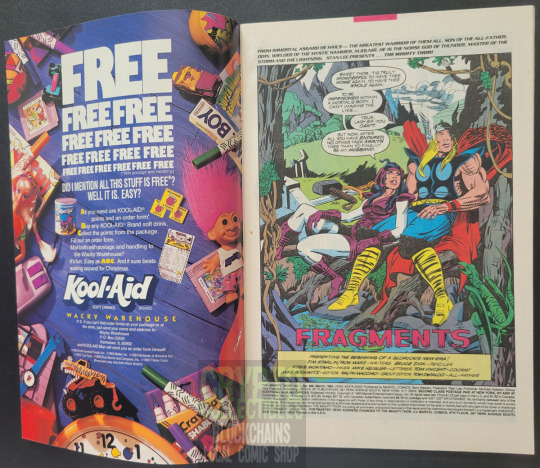


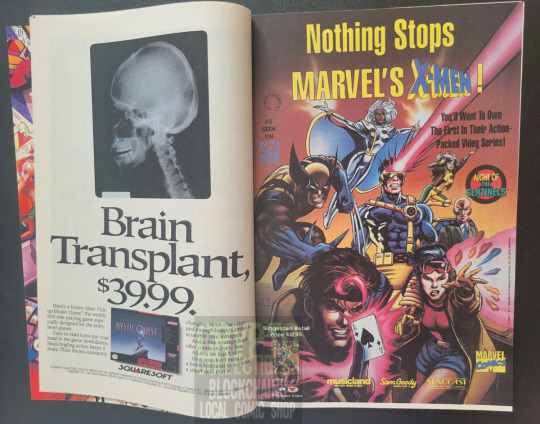

The Mighty Thor #460 (March 1993) by Marvel Comics
"Fragments," Written by Jim Starlin and Ron Marz, drawn by Bruce Zick and Steve Montano, cover by Lou Harrison;
#The Mighty Thor#Thor#Mighty Thor#Marvel Comics#Ron Marz#Jim Starlin#Bruce Zick#Steve Montano#Lou Harrison#Eric Masterson#Comic Books#Comics#1993#Painting
2 notes
·
View notes
Text
John Cage frente al mundo
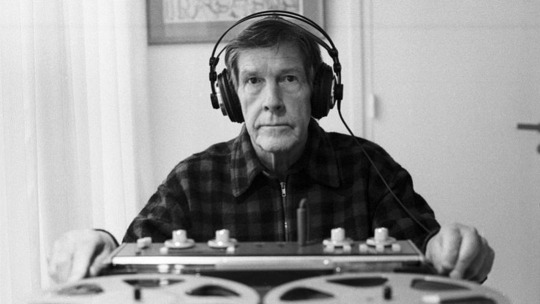
[John Cage en París en 1981 / D. S.]
La editorial bonaerense Caja Negra edita una importante selección del legado epistolar de John Cage, uno de los nombres esenciales del arte moderno
Pocos aspectos de la existencia se escapaban de las sensibles antenas que John Cage (Los Ángeles, 1912 - Nueva York, 1992) tenía conectadas con el mundo. El orden y el control que siempre mantuvo de su correspondencia es una fuente más que fiable para comprobarlo.
Para muchos, John Cage no pasa de ser el extravagante tipo que escribió una obra con cuatro minutos y treinta tres segundos de silencio, pero en realidad el artista fue mucho más que eso. Se debe a Schoenberg, el más relevante de sus maestros, aquella idea de que "quizás no fuera compositor, pero sí un inventor genial". A Cage se adjudica, en efecto, la invención del piano preparado y otros artilugios de percusión, incluido el uso de plantas, pero desde su punto de vista la invención era mucho más poderosa: "He inventado la música", dijo una vez a un periodista. Más allá de la impresión de arrogancia que pueda dar esta frase a lo que apuntaba Cage era ciertamente a una visión radicalmente diferente de la música, en la que el sujeto creador pierde por completo su posición en la típica dialéctica artística, porque la obra se crea sola.
Cage dejó una producción extensísima de música en la que el azar y la indeterminación, pero también los ruidos cotidianos y electrónicos, juegan un papel básico. En el escenario rompedor de las vanguardias mundiales de la segunda posguerra, Cage no estuvo sólo, pero fue un agitador de primerísimo orden. Además era de natural grafómano, y por eso junto a su música, nos quedan sus libros y sus procedimientos para usar textos ajenos mediante el empleo también del azar, con otra invención a mitad de camino entre la música, la poesía fonética y la performance: la del mesóstico. Más aún: Cage dejó obra gráfica, fue un experto en setas y acreditado jugador de ajedrez.
De todo ello dejó buena muestra en su abundante correspondencia, que puede analizarse como un auténtico paseo por la historia cultural del mundo. La editorial argentina Caja Negra ha vertido al español una selección de las carta de Cage que hizo Laura Kuhn en 2016 para su publicación en Wesleyan University Press.
youtube
Gerardo Jorge ha prologado y anotado la edición española, que se ha dividido en cinco periodos: 1930-49, 1950-61; 1962-71; 1972-82, 1983-92. Jorge destaca también cinco puntos sobre los que gravita la atención de Cage: “el problema América-Europa”, las relaciones entre Oriente y Occidente, la invención y la técnica, las relaciones entre arte y política, la amplia discusión cultural. A todo esto, que está bien diagnosticado, habría que añadir las relaciones personales del músico: sus padres; Xenia Andreyevna Kashevaroff, escultora surrealista que sería su esposa entre 1935 y 1945; por supuesto Merce Cunningham, el bailarín que sería su pareja sentimental desde principios de los 40 y hasta el fin de sus días; David Tudor, el pianista del que sin duda llegó a enamorarse; y otros muchos amigos y conocidos. Por estas cartas pasan sus pasiones, sus obsesiones y algunos desencuentros. En muchos casos, el interés artístico se une al personal: así Cunningham y Tudor fueron colaboradores habituales. Pero además Cage mostró un aprecio enorme por dos artistas singulares y esenciales del siglo con los que tuvo una estrecha amistad: Marcel Duchamp y Bucky Fuller. Compleja fue su relación con Pierre Boulez, pues tras un primer periodo de mutua admiración (que en el caso de Cage llegó casi a la idolatría), la relación se enfría y desde la segunda mitad de los 50 el francés casi desaparece de su correspondencia y de sus referencias. Pero están desde luego otros grandes músicos del siglo, de los cercanos Morton Feldman, Earl Brown y Christian Wolff a Lou Harrison, Luigi Nono, Luciano Berio, Henry Cowell, Murray Schaffer, Alvin Lucier e incluso Leonard Bernstein, y no faltan otras grandes personalidades de la cultura y la sociedad del tiempo, como Marshall MacLuhan, Joseph Beuys o la mismísima Yoko Ono, a la que atribuye su cambio de dieta y la mejora de su salud.
youtube
Las cartas pueden leerse también en la busca de las ideas estéticas de Cage conectadas directamente con su producción artística, pues abundan las referencias sobre muchas de sus obras antes, durante y después de sus puestas en escena. Siendo tan abrumador el volumen de nombres, datos e ideas sólo algo se echa en falta en este volumen de edición muy agradable y manejable para el lector: un aparato de índices (onomástico, temático, de obras del protagonista), herramienta documental que elevaría la presente edición de la categoría del aporte valioso a la del auténtico acontecimiento en la divulgación de una figura esencial del arte contemporáneo.

[John Cage]: Escribir en el agua. Cartas (1930-1992)
Edición de Laura Kuhn. Selección y traducción de Gerardo Jorge. Buenos Aires: Caja Negra, 2021. 468 págs. 25 euros.
Sugerencias. Más que un músico
El primer libro publicado por John Cage se tituló Silence, y recogía una serie de conferencias y escritos diversos, en los que el músico plasmaba sus concepciones artísticas esenciales, que tenían que ver muy especialmente con la indeterminación, el zen y la eliminación del sujeto creador en el proceso artístico. Aunque la obra vio la luz en 1961 y tuvo un éxito que sorprendió al propio Cage, en España hubo que esperar al décimo aniversario de su muerte para que en 2002 la editorial Árdora lo vertiera al castellano.
Es sin duda la obra más conocida y divulgada del californiano, que escribió mucho. El primer volumen de sus Diarios (que alcanzarían las ocho entregas) se publicó en 1965 con el título de Cómo mejorar el mundo (sólo harás que las cosas empeoren). Muchos de los textos ahí incluidos han visto la luz en diversas recopilaciones en castellano, como la que editó la editorial mexicana Alias en 2019, Del lunes en un año. En 2018 Cactus había reunido en Ritmo etc. los escritos para dos de las obras más singulares de Cage: A Year from Monday (1967) y Empty Words (1973). En 2012 Francisco Deco puso al alcance del público español El libro de las setas (original de 1972) en el Centro de Creación Experimental (editora vinculada a la Universidad de Castilla-La Mancha), que recogía no sólo la pasión de Cage por los hongos, sino también parte de su obra gráfica. Hace sólo unas semanas, la Universidad de Granada ha publicado una nueva incursión de Deco en la bibliografía cageana: ¿Dónde comemos? y ¿Qué comemos?, en un tomo que recoge además el primer volumen de Diarios.
[Diario de Sevilla. 18-07-2022]
#john cage#libros#books#caja negra#pierre boulez#marcel duchamp#bucky fuller#morton feldman#gerardo jorge#laura kuhn#merve cunningham#david tudor#earl brown#christian wolf#alvin lucier#luigi nono#luciano berio#leonard bernstein#henry cowell#lou harrison#murray schaffer#arnold schoenberg#francisco deco#xenia andreyevna kashevaroff#marshall macluhan#joseph beuys#yoko ono#música#music#Youtube
3 notes
·
View notes
Text
Everything You Wanted to Know About Javanese Gamelan But Were Afraid to Ask: John Pitts' "Extreme Heterophony"
Everything You Wanted to Know About Javanese Gamelan But Were Afraid to Ask: John Pitts’ “Extreme Heterophony”
This is John Pitts‘ second incursion into adapting non-western music for the conventional piano. In doing so he follows a long tradition of fascination with non-western musics by western composers. Listeners will likely be familiar with Beethoven or Mozart who imitated Turkish music to add an exotic dimension to their compositions (Beethoven with his Turkish March sequence in the finale of the…

View On WordPress
#Alan Hovhaness#Beethoven#Benjamin Britten#Classical Music#Colin McPhee#Composers#contemporary music#David Fanshawe#gamelan#Hindustani music#Javanese Gamelan#Jody Diamond#John Pitts#La Monte Young#Lou Harrison#Modern Music#Mozart#Music#New Music#Piano#raga#Terry Riley
4 notes
·
View notes
Text

"She's in her wisdom
here in the trees."
----Lou Harrison
1 note
·
View note
Text

George, holding his niece Leslie Caldwell, with his siblings Lou and Peter Harrison in Benton, Illinois sometime in lSeptember/October 1963. Photo courtesy of Acclaim Press, via Riverfront Times.
“As polite a fellow as you could ever meet. That was the first thing that struck you about him. He was real humble and didn’t like talking about himself much. Everybody around town liked him.” - Gabe McCarty, USA Today, February 10, 2014
In August 1964, when The Beatles played a concert in Chicago, McCarty attended and was invited by George to meet up at the hotel.
“‘I remember him asking me if I had done any recording yet,’ McCarty said. ‘I guess the thought that was important to me.’ Harrison then asked his guests [McCarty, and George’s sister Lou] if they would like to have something to eat or drink, and a cart ‘with enough food and drinks for a hundred people’ was later wheeled into the room, McCarty said. […] When the two departed, McCarty remembers shaking Harrison’s hand and giving him a hug. ‘I told him to take care, and that was the last time I would ever see him,’ McCarty said.” - Before He Was Fab: George Harrison’s First American Visit (2000) (x)
Please note: You can find photos taken during George and Peter’s trip in the book indispensable Living In The Material World.
#George Harrison#quote#quotes about George#Peter Harrison#Lou Harrison#Gabe McCarty#1963#1960s#The Beatles#George and fame#ghamericanvisit60#fits queue like a glove
66 notes
·
View notes
Text
Milton Babbitt and Lou Harrison being relatable as fuck
I recently had to read two interviews from William Duckworth's Talking Music, in which he interviews a bunch of composers. I just had to share some of the things I wrote while reading.
Firstly, the stuff my therapist will be seeing (as soon as I actually get one, that is):
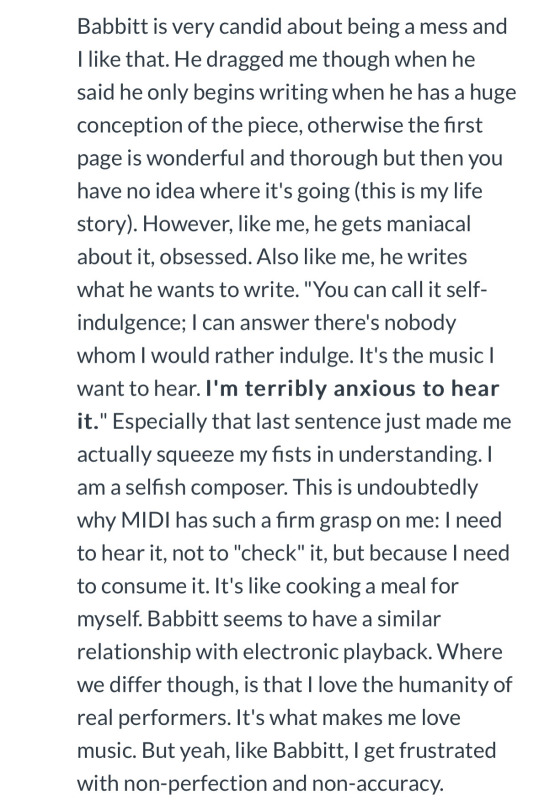

I was really shocked at how specifically relatable these points were to me. Especially Harrison with the "mindlessness". Babbitt struck me as well, but I imagine that writing solely for oneself isn't something exactly rare to find in composers, especially neurodivergent ones. Harrison actually also touches on that kind of feverish-ness of needing to create:

Lastly, some general observations:


Really good read. I highly recommend this book; it's extremely comprehensive. I'll probably put a few more of these in here as the semester progresses.
1 note
·
View note
Text
Some snippets of my discussion post on Milton Babbitt and Lou Harrison’s interviews from “Talking Music” by William Duckworth
I do not intend to make this blog like an educational thing. Most of it is definitely gonna be incoherent rambling and obsessing over stuff, but I really want to share this.
Firstly, the stuff for my imaginary therapist:
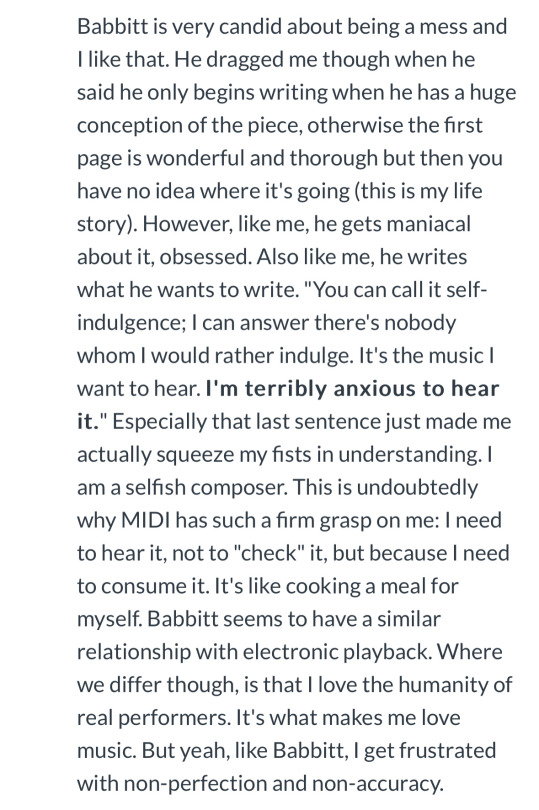

I was really shocked at how specifically relatable these points were to me. Especially Harrison with the “mindlessness”. Babbitt struck me as well, but I imagine that writing solely for oneself isn’t quite as rare to find in composers, especially neurodivergent ones. Harrison actually also touches on the kind of feverishness of needing to create:

Lastly, some general observations:

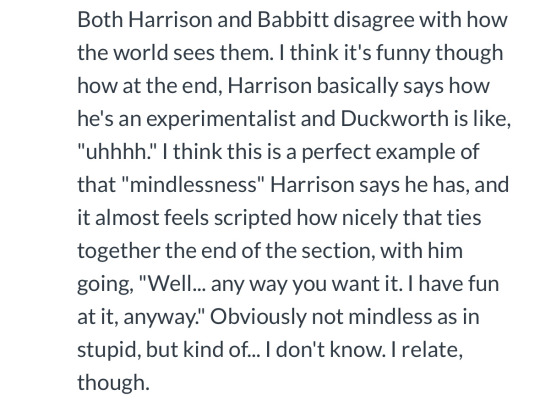
Really good read. Highly recommend this book. I’ll probably put a few more of my discussion posts in here as the semester goes on.
Yeah… definitely don’t expect this composure to last…
0 notes
Text
youtube
Are you ready for something truly intriguing? Harrison's use of percussive instrumentation to form the underlying tapestry for the violin and then weave into the story it's telling is brilliant.
Still not thrilled about this time signatures though.
0 notes
Photo
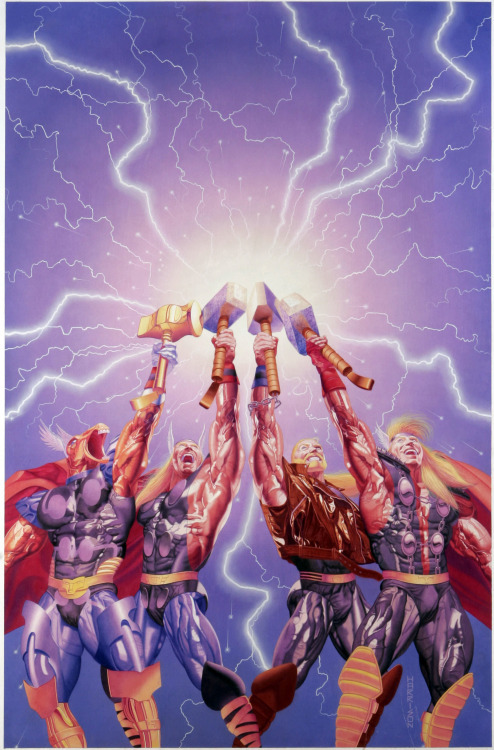
Thor Corps #4 Original Art by Lou Harrison
#lou harrison#beta ray bill#thor#eric masterson#thunderstrike#dargo ktor#thor corps#marvel#marvel comics
15 notes
·
View notes